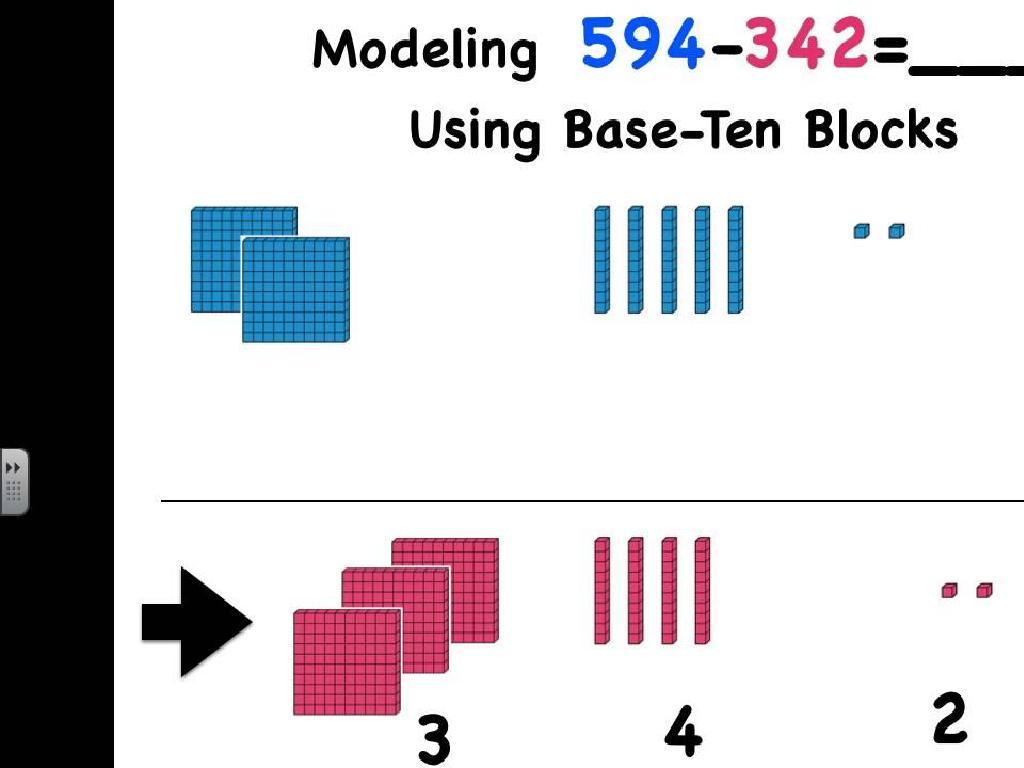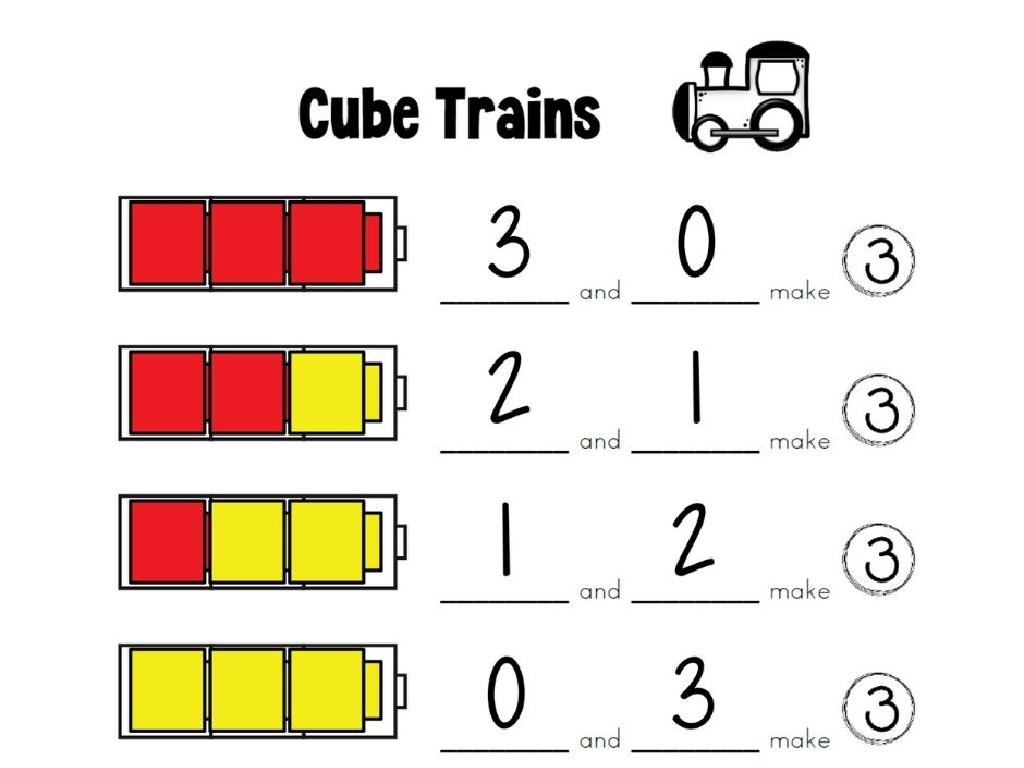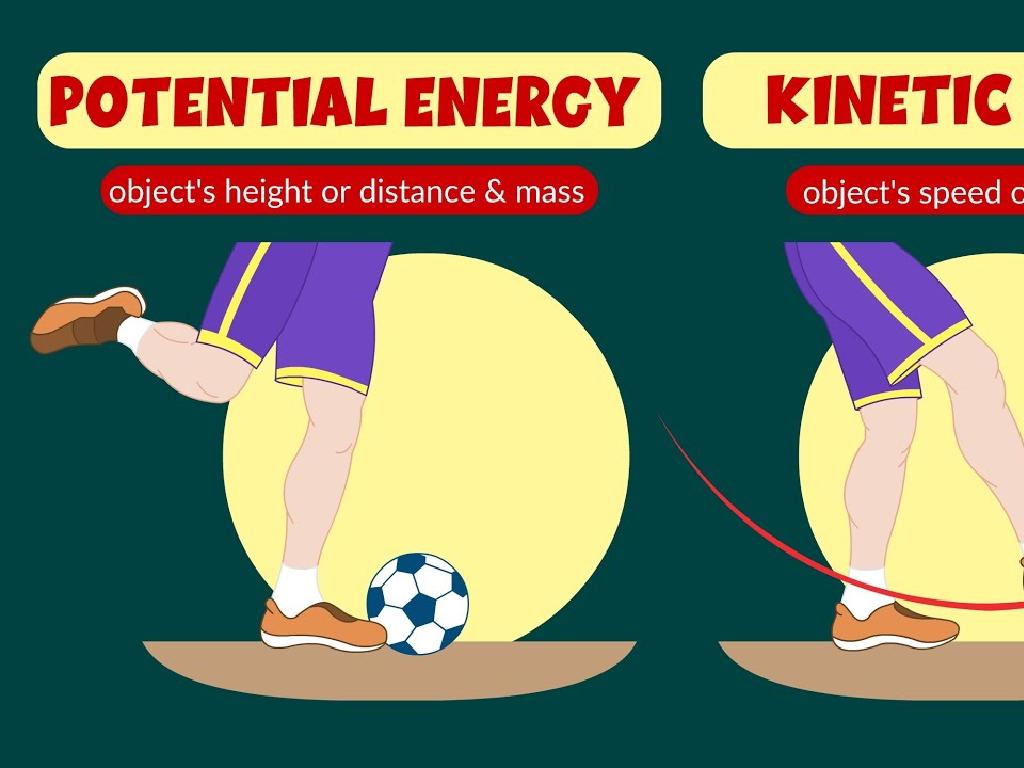Order Items From Most General To Most Specific
Subject: Language arts
Grade: Fourth grade
Topic: Organizing Writing
Please LOG IN to download the presentation. Access is available to registered users only.
View More Content
Ordering Ideas: From General to Specific
– Discover how to organize thoughts
– Learn general to specific ordering
– Start with broad ideas and narrow down to details
– Understand why organization is key
– Good organization makes writing clear and effective
– Practice organizing ideas today
|
This slide introduces students to the concept of organizing their writing by ordering ideas from the most general to the most specific. It’s crucial to explain that starting with a broad idea helps to set the stage for the reader, and then adding specific details helps to paint a clearer picture. Emphasize the importance of organization in making their writing more understandable and engaging. During the lesson, provide examples of general to specific ordering and engage the students in an activity where they practice organizing ideas on a topic. This will help them grasp the concept and apply it to their writing.
From General to Specific: Organizing Ideas
– Think of a funnel: broad to narrow
– A funnel is wide at the top and narrow at the bottom, just like our thoughts should be organized
– Start with a big idea
– Move to specific details
– Details that explain or support the big idea come after
– See it in daily life
– For example, talking about ‘transportation’ and then ‘bicycles’
|
This slide introduces the concept of organizing writing from general to specific, akin to a funnel. Begin by explaining that writing should start with broad ideas and then narrow down to the details, just like a funnel’s shape. Emphasize the importance of starting with a big idea to capture the reader’s interest, then moving onto the specific details to flesh out the concept. Use relatable examples, such as organizing a paragraph about transportation by starting with the general concept before discussing specific modes like bicycles. Encourage students to think of their own examples and understand how this method can help clarify their writing.
The Importance of Order in Writing
– Ordering helps comprehension
– It guides readers through your ideas step by step.
– Clarity in writing
– Clear order makes it easier to follow your thoughts.
– Maintains focus in content
– A focused order prevents straying from the main topic.
|
When teaching students about the importance of ordering their writing from most general to most specific, emphasize that this structure helps readers understand the main point more easily. It acts like a roadmap, guiding them from the broad concept to the finer details. Clarity is achieved when each sentence builds upon the previous one, and maintaining a focused order ensures that all the writing contributes to the main idea without digressing. Encourage students to practice this by starting paragraphs with a general statement and then adding supporting details. Use examples from texts they are familiar with and have them practice organizing ideas during writing exercises.
Structuring Paragraphs: From General to Specific
– Start with a topic sentence
– The main idea, like an umbrella, covers the paragraph
– Add supporting details
– Facts and examples, like raindrops, make the topic clear
– Conclude with a closing sentence
– The final thought, like a handle, holds it all together
|
This slide is aimed at teaching students how to organize their writing by starting with the most general element, the topic sentence, and moving to more specific details. The topic sentence sets the stage for the paragraph, much like an umbrella provides coverage. Supporting details are then introduced, akin to raindrops that fill in the space beneath the umbrella, giving it purpose. Finally, the concluding sentence wraps up the paragraph, similar to how a handle completes the umbrella. Encourage students to think of their paragraphs in this structured way to improve their writing coherence and clarity. In the next class, students can practice writing paragraphs using this method and share their work with the class for feedback.
Let’s Practice Together: Organizing Sentences
– Activity: Order sentences from general to specific
– Collaborate with a classmate
– Choose a partner and work as a team
– Discuss why you chose that order
– Explain your reasoning for the sentence order
– Share your results with the class
|
This activity is designed to help students understand the concept of organizing writing by ordering ideas from the most general to the most specific. Students will pair up and receive a set of sentences to arrange. Encourage them to discuss their thought process with their partner to better understand the rationale behind their choices. After the activity, ask pairs to share their organized sentences with the class and explain why they ordered them that way. This will foster communication skills and deepen their understanding of the organizational structure in writing. Possible variations of the activity could include using different sets of sentences for each pair, having students create their own sentences to organize, or turning it into a competition to see which pair can organize their sentences the fastest while still making logical sense.
Your Turn to Write: Favorite Animal
– Start with a general statement
– Begin with what type of animal it is
– Add three specific details
– Describe its habitat, diet, and one unique trait
– Conclude with a final thought
– Wrap up with why it’s your favorite
– Share your paragraph in class
|
This activity is designed to help students practice organizing their writing by starting broad and then narrowing down to specific details. They should begin their paragraph with a general statement about their favorite animal, such as ‘Dogs are wonderful pets.’ Next, they should include three specific details about the animal, like where it lives, what it eats, and something special about it. For example, ‘My dog loves to play fetch, eats dry kibble, and can do a funny dance when excited.’ Finally, they should end with a concluding sentence that reflects on why this animal is their favorite, tying back to the general statement. Encourage creativity and personal connection. In the next class, students can volunteer to read their paragraphs, fostering a supportive environment for sharing and discussion.
Class Activity: Organizing Our Ideas
– Pick a topic in groups
– Write a paragraph together
– Start general, then get specific
– Begin with a broad statement, narrow down to details
– Share and discuss with the class
|
This activity is designed to teach students how to structure their writing by starting with a general idea and then adding specific details. Divide the class into small groups and let each group choose a topic they are interested in. Provide guidance on writing an organized paragraph, emphasizing the importance of starting with a broad statement and then narrowing down to more specific points. Once the groups have written their paragraphs, have them present their work to the class. This will allow for a discussion on the effectiveness of their organization and provide an opportunity for peer learning. Possible topics could include favorite hobbies, a recent field trip, or a book they’ve read. Encourage creativity and praise clear organization in their writing.
Wrapping Up: Organizing Ideas
– Review of today’s lesson
– Importance of general to specific
– Helps readers understand big ideas before details
– Homework: Find real examples
– Look in a book/article for a topic that starts broad then narrows down
– Share findings next class
|
As we conclude today’s lesson, it’s crucial to recap the key points about organizing writing from the most general to the most specific. Emphasize to students that this structure helps readers grasp the main idea before diving into the details. For homework, students should find examples of this concept in their reading material, which will reinforce their understanding and application of the concept. In the next class, be prepared to facilitate a discussion where students can share and explain the examples they found. This will not only solidify their comprehension but also encourage active participation and critical thinking.






